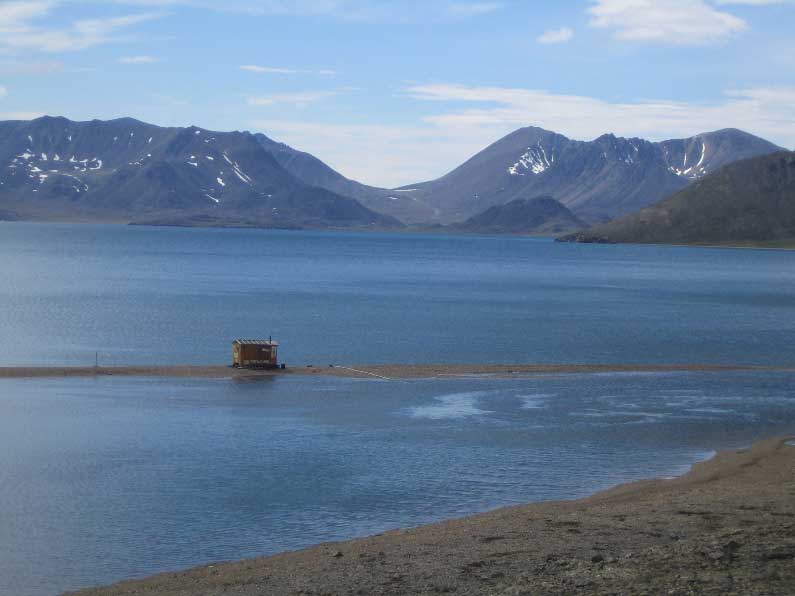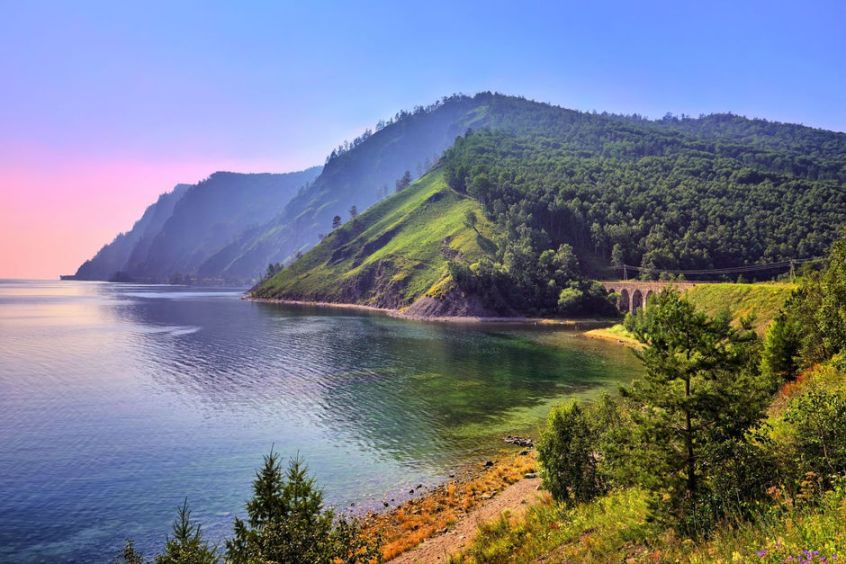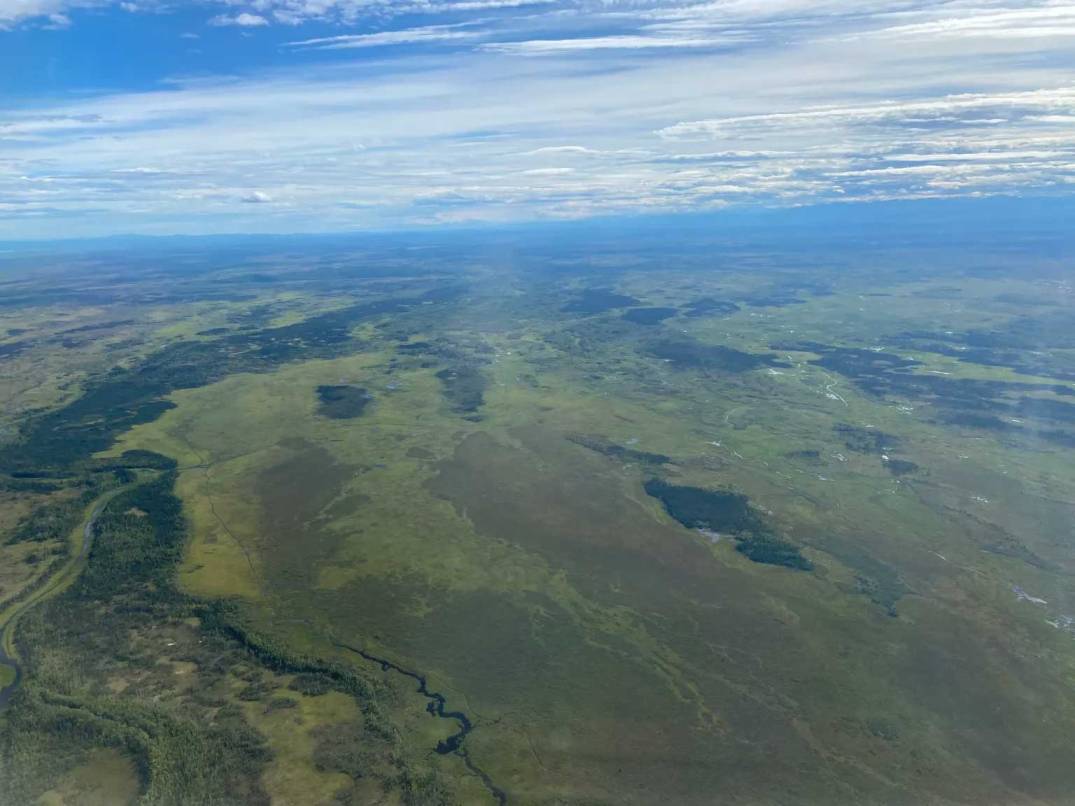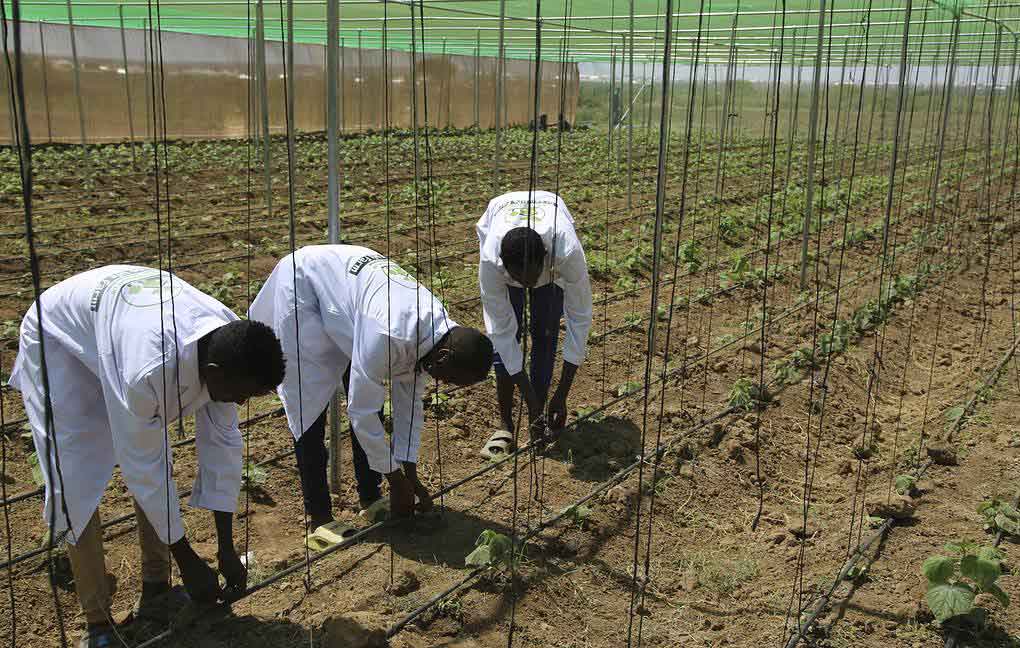Decreasing oxygen levels in water pose a critical threat to nature and society on Earth. On average, lakes around the world will experience unprecedented climate conditions by the end of this century. Warming Arctic regions are causing toxic algae blooms. A NASA study found that tundra vegetation will be taller and greener by 2100.
The warming Arctic is causing large blooms of toxic algae that shellfish feed on. These are then eaten by other sea creatures, and the poison can spread up the food chain to humans. American oceanographers recently discovered a large-scale bloom of toxic algae called dinoflagellates near Alaska. Their concentrations were nearly 20 times higher than the dangerous threshold.
The planet’s climate is actively changing, which can already be seen in the reduction of ice and warming in the polar zones of the Earth. The consequences of such a rise in temperature are many: for example, due to the loss of ice in the Russian Arctic, the risk of forest fires in Eastern Siberia is growing. In addition, species that previously lived in temperate or subpolar climate zones are moving into high-latitude zones.
For example, between 2015 and 2017, a decrease in the diversity of bacteria and protozoa and an increase in the number of zooplankton and bottom fish species were recorded in the waters of the warming Chukchi Sea. Such changes have unpredictable consequences, since they restructure long food chains – from protozoa to seabirds and people. In the same sea in 2021, the risk of red tides increased – this is the name for the mass bloom of dinophyte algae. However, this phenomenon is by no means safe. Colonies of the dinoflagellate Alexandrium catenella bloom along temperate and subpolar latitudes in spring and summer. They contain powerful neurotoxins that accumulate in organisms that feed on these algae. The poison is transmitted into the food chain through shellfish (they are considered the main carriers), causing paralytic poisoning of fish, birds and even people whose diet consists of seafood.

In 2021, the authors of the article indicated that the threat of large-scale algal blooms is growing – the area of accumulation in the Chukchi shelf region in US waters reaches almost 145,000 square kilometers.
A year later, a group of researchers from the United States decided to study in detail the regional dynamics of these dinoflagellates. During several expeditions in July-September 2022, the Imaging FlowCytobot device, which was attached to a vessel, collected images of phytoplankton communities. Then, in the northern regions of the Bering and Chukchi seas, as well as in the western Beaufort Sea, oceanographers discovered the largest accumulation of blooms of highly toxic A. catenella. A scientific paper about this was published in the journal Limnology and Oceanography Letters.
Dinophyte algae bloomed in Arctic waters for six weeks – and, notably, unlike other coastal areas of the United States, the dynamics of marine communities along Alaska are poorly monitored, even though many commercial organizations operate in the region, including those involved in the extraction of marine resources.
The concentration analysis showed that in the studied area there are more than 17.4 thousand cells of toxic dinoflagellates per liter of water. It is important to note that a concentration of more than a thousand cells per liter is considered dangerous. As the authors of the article emphasized, such an unusual density of these microorganisms has never been detected before.
The toxicity level, scientists say, is high. The possible reason is that A. catenella cells accumulate more toxins when they grow at low temperatures. But the possible consequences of such a toxic bloom are unclear.
The deaths of 25 walruses and two gray whales off Alaska’s northern Seward Peninsula may be linked to high concentrations of dinoflagellates. The algal communities likely passed through the Bering Strait, depleting the water’s supply of inorganic nitrogen, or nutrients, in six weeks. It’s also possible that A. catenella blooms in the Russian Arctic, but those areas weren’t included in the study. The blooms deposited new cysts on the bottom of the Chukchi Sea, which will ensure the algae’s presence next season, the scientists added. Either way, the spread of favorable conditions for the growth of toxic dinoflagellates could threaten food security by contaminating seafood and delaying the harvesting season for marine resources.
Decreasing oxygen levels in water pose a critical threat to nature and society on Earth, an international team of scientists said in an article for the journal Nature Ecology & Evolution.
Scientists say oxygen levels in water are one of the so-called planetary boundaries – global environmental indicators that determine the Earth’s ability to support human existence.
“The observed deoxygenation of freshwater and marine ecosystems represents another process of critical importance for the ecological and social systems of the Earth. The rapid and persistent deoxygenation of the Earth’s aquatic environments indicates that the oxygen content is approaching a critical threshold,” the article says.
As the University of California, Santa Cruz, added in a press release, since 1980, the Earth’s lakes and reservoirs have lost five and 18 percent of their oxygen, respectively. The seas, in turn, have lost two percent of their oxygen since 1960. The enormous volume of the oceans makes such a small loss seem large in absolute terms, the press release notes.
A new study by scientists at the Center for Climate Physics of the Institute of Basic Science in South Korea shows that by the end of the century, lakes around the world will face unprecedented warming due to human-induced climate change. Tropical lakes will be the first to experience these unprecedented conditions, which will affect both the surface and subsurface layers, posing a serious threat to biodiversity and ecosystems.
Lakes, renowned for their rich biodiversity and critical ecological functions, are facing an alarming trend: rapidly rising temperatures. A recent study published in the journal Nature Geoscience by a team of limnologists and climate modelers warns that if anthropogenic warming continues at its current rate, lakes around the world could experience massive and unprecedented warming at both surface and subsurface levels by the end of this century, far exceeding anything previously observed.

The study used lake temperature data modeled using a state-of-the-art computer climate model (Community Earth System Model version 2) covering the period from 1850 to 2100 CE. It is the first model of its kind to capture the dynamics and thermodynamics of lake systems in conjunction with the atmosphere. In the study, the scientists used a set of 100 simulations from the past to the future, which were run on one of South Korea’s fastest computers. Each simulation gives a slightly different picture of natural climate variability, while also accounting for the anthropogenic effects of warming associated with increasing greenhouse gas concentrations. Using this integrated modeling approach, the scientists were able to separate the range of natural lake temperature variations from those caused by human intervention. This allowed the team to estimate for the first time when lake temperatures will exceed natural limits for a long period of time.
On average, lakes around the world will experience unprecedented climate conditions by the end of this century. However, the timing of this event varies around the world. Tropical lakes, rich in biodiversity, will be the first to experience unprecedented conditions, with global warming about 2.4°C above pre-industrial levels.
While surface warming affects species living in shallow lake layers, some organisms may migrate vertically in search of more suitable thermal habitats. Therefore, it is also important to consider how warming penetrates into the subsurface. The study found the synchronous occurrence of unique conditions in the subsurface of tropical lakes, caused by the rapid downward transmission of warming signals during frequent lake mixing events. In contrast, high-latitude lakes partially protect the subsurface from surface warming through stratification, delaying and sometimes even preventing climate change at depth.
A warming global climate is changing the vegetation patterns of forests in the far north, a trend that will continue at least through the end of this century, according to NASA researchers. Changing forest structure could absorb more of the greenhouse gas carbon dioxide (CO2) from the atmosphere or increase the melting of permafrost, releasing ancient carbon. Millions of data points from the Ice, Cloud, and land Elevation Satellite 2 (ICESat-2) and Landsat missions helped inform this latest study, which will be used to refine computer models for climate prediction.
Tundra landscapes are growing taller and greener. As the climate warms, forest vegetation in the far north is changing, with more trees and shrubs appearing. These changes in the vegetation structure of boreal forests and tundra will continue for at least the next 80 years, according to a recently published study by NASA scientists.

The scene of the Murphy Dome Fire, near Fairbanks, Alaska, during the Arctic Boreal Forest Vulnerability Experiment (ABoVE) in August 2022. NASA/Katie Jepson
Boreal forests typically grow between 50 and 60 degrees north latitude, covering much of Alaska, Canada, Scandinavia, and Russia. The biome is home to evergreens such as pine, spruce, and fir. Further north, the permafrost and short growing season of the tundra biome have historically made it difficult to support large trees or dense forests. Vegetation in these regions has instead consisted of shrubs, mosses, and grasses.
The boundary between the two biomes is difficult to discern. Previous studies have shown that plant growth is increasing at high latitudes and moving north into areas that were previously sparsely covered by tundra shrubs and grasses. Now, a new NASA-led study is finding an increased presence of trees and shrubs in these tundra regions and adjacent transitional forests where the boreal and tundra regions meet. This is projected to continue at least through the end of the century.
“The results of this study advance a growing body of work that recognizes a shift in vegetation patterns in the boreal forest biome,” said Paul Montesano, lead author of the paper and a research scientist at NASA’s Goddard Space Flight Center in Greenbelt, Maryland. “We used satellite data to track increases in vegetation growth in this biome since 1984, and we found that it’s similar to what computer models predict for decades to come. This paints a picture of ongoing change over the next 80 years or so, particularly strong in transition forests.”

The study data, presented on a map of Alaska and northern Canada, highlight changes in tree cover extending into transitional landscapes. In boreal North America, the largest increases in tree cover (dark green) occurred in transitional tundra landscapes. These landscapes are found along the cold northern edge of the study area and historically supported mostly shrubs, mosses, and grasses. NASA Earth Observatory/Wanmei Liang
The scientists found predictions of “positive changes in mean elevation” across all the tundra and transitional forest landscapes represented in the study, suggesting that trees and shrubs will be both larger and more abundant in areas where they are currently rare.
“The increase in vegetation that corresponds to the shift could potentially offset some of the impact of rising CO2 emissions by absorbing more CO2 through photosynthesis,” said study co-author Chris Ney, a project scientist for NASA’s Landsat 8 and 9 mission at Goddard. The carbon absorbed in this process would then be stored in trees, shrubs, and soil.
Changing forest structure could also cause permafrost to melt as more sunlight is absorbed by darker vegetation. This could release CO2 and methane that have been stored in the soil for thousands of years.

Flying over the boreal landscape of Fairbanks, Alaska, during the ABoVE field campaign in August 2022. NASA/Sophie Bates
In a paper published in the journal Nature Communications Earth & Environment in May, NASA scientists described the mix of satellite data, machine learning, climate variables, and climate models they used to simulate and predict what forest structure will look like in the coming years. Specifically, they analyzed nearly 20 million data points from NASA’s ICESat-2. They then matched those data points with tens of thousands of scenes of North American boreal forests from 1984 to 2020 from Landsat, a joint NASA-U.S. Geological Survey mission. Creating models with such large amounts of data, called “big data” projects, requires advanced computing capabilities.
The ICESat-2 mission uses a laser instrument called lidar to measure the height of Earth’s surface features (like ice sheets or trees) from the perspective of space. In the study, the authors looked at these measurements of vegetation height in the far north to understand what the structure of boreal forests looks like today. The scientists then modeled several future climate scenarios — adjusting for different temperature and precipitation scenarios — to show what forest structure might look like in response.
“Our climate is changing, and as it changes, it affects almost everything in nature,” said Melanie Frost, a remote sensing scientist at NASA Goddard. “It’s important for scientists to understand how things are changing and use that knowledge to inform our climate models.”
African farmers are losing about a third of their harvests due to “climate shocks,” including localized droughts, micro-floods, and other small-scale events.
Experts from the World Bank, the UN University and European climatologists have concluded that farmers in Ethiopia, Nigeria, Mali and other African countries lose about a third of their harvests every year due to various “climate shocks,” including local droughts, microfloods and other small-scale phenomena. The scientists’ findings were published in an article in the journal Nature Sustainability.
“Small ‘climate shocks’ receive far less attention than major droughts, hurricanes or massive floods, but their cumulative impact can be significant. Our analysis of data from 120,000 farmers’ fields in six African countries shows that they affect about 35% of farms and reduce national yields by 29%,” the study says.

This is the conclusion reached by a group of economists and climatologists led by Philip Wollburg, lead economist at the World Bank (Rome, Italy), when analyzing data. The data was collected in 2008-2019 by the organization’s specialists, as well as by relevant authorities in six African countries, including Ethiopia, Nigeria, Mali, Malawi, Tanzania, and Niger.
The data, the researchers note, includes information on how often and in what quantities the owners of 120,000 individual fields and farms lost their harvests and what natural and climatic anomalies accompanied these losses. According to the researchers, this approach to collecting data is extremely atypical, since when conducting such an analysis, scientists usually rely on macro data, rather than information from individual farms.
The scientists’ analysis showed that the impact of “climate shocks” on the well-being of African farmers, as well as on the overall harvest volume in African countries, is currently greatly underestimated. In particular, in 2011, micro-droughts, floods, insect infestations and other weather and climate factors deprived farmers in Niger of about 70% of their harvest, which also happened in Ethiopia in 2015-2016 and in Malawi in 2018-2019.
On average, farmers in these six countries lose about a third of their harvests each year as a result of “climate shocks,” which has a significant impact on food availability and economic and political stability in these regions of Africa, where about 140-170 million people live in regions prone to floods and droughts. This should be taken into account when developing plans to implement the UN Sustainable Development Goals aimed at combating hunger, the researchers concluded.
The impacts of climate change threaten the well-being of people and the planet, and global warming targets are far from being achieved, according to a press release from the World Meteorological Organization (WMO).
“We are far from achieving vital climate goals. The impacts of climate change and extreme weather are eroding development gains and threatening the well-being of people and the planet,” the document says. The WMO stresses that greenhouse gas levels have reached record levels and without decisive action the world risks global warming of 3°C this century.
“We need urgent and ambitious action now to support sustainable development, combat climate change and reduce disaster risk. The decisions we make today can mean the difference between future collapse or breakthrough to a better world,” said Secretary-General Celeste Saulo.
Human-induced climate change has led to widespread and rapid changes in the atmosphere, ocean, cryosphere, and biosphere. 2023 was the warmest year on record by a wide margin, with widespread extreme weather events. This trend continued into the first half of 2024.
Global temperatures could reach record highs in the next five years, driven by greenhouse gases and a shift in ocean currents from La Niña to El Niño, the WMO predicts.
Former UN Secretary-General Advisor Chung: The Speed of Climate Change in the World is Growing Frighteningly. The speed of climate change in the world is growing, which is evident, among other things, from the very warm September in Moscow, and the planet may be approaching the point of no return, said Nobel Peace Prize laureate, former UN Secretary-General Advisor on Climate Change Rae Kwon Chung.
“It is very warm and sunny in Moscow now in September. In Seoul before I left it was 35 degrees, it should be 20 degrees in September. I was here last year, it was very cool in Moscow. The rate of change is very high, we may be approaching the point of no return,” he said, speaking at the Cloud Cities forum.
The expert noted that he still believes it is possible to change this trend, although he is becoming more and more skeptical and very concerned.




